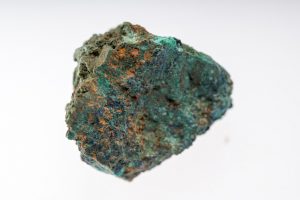If find yourself in a scenario where you have or are experiencing mineral rights for the first time this beginners guide will define the differences between surface and mineral rights and discuss the pros and cons of leasing and selling.
Mineral rights
Otherwise known as a mineral estate, these legal rights give the owner the  ability to exploit or mine any minerals or precious resources under the ground of that land. These may be organic, inorganic substances like metal ores, coal, oil, gas, gemstones, stone, salt or any substance besides sand, gravel or water.
ability to exploit or mine any minerals or precious resources under the ground of that land. These may be organic, inorganic substances like metal ores, coal, oil, gas, gemstones, stone, salt or any substance besides sand, gravel or water.
If you can 20 aches off mineral rich land, you can lease the mining rights while still keeping ownership and the deeds to the land, still outsourcing mining rights. The surface rights are, indicating the surface of the land. Whilst the mineral rights are in the context of the minerals or mined resources, so what lies beneath the surface of the property.
Surface rights refer to the sand, gravel or water. So an owner can sell the mineral rights and still keep control of the basic land and related contents water, sand and buildings, however, the elements are given up in the form of the mineral rights.
Leases your rights and potential risks
When the mineral rights are leased this is leasing the minerals to the mining company or even energy supplier. Both parties will then come to an agreement on the price for the mining and price of the minerals to be sold. So the lease is an agreement to access the property and mining, for a fixed price, much like renting a home.
- Lease: agree to rent and mine
- Lessor: owner of the resource the mining company buys from.
DOI or division of interest described how the resource mining ie minerals will be divided due the or after the mining process. Lessee buying the resource, lessor selling.
Amount is agreed on to be paid for the resource (gold, diamonds, minerals etc)  and the volume that the lessee is granting permission to mining as a result of the terms of the mining lease. And agreements on rent and royalties payments, varied or decreased if the mine stops producing. Payment to the lessor may vary depending on the volume of the resource mined and sold.
and the volume that the lessee is granting permission to mining as a result of the terms of the mining lease. And agreements on rent and royalties payments, varied or decreased if the mine stops producing. Payment to the lessor may vary depending on the volume of the resource mined and sold.
Revenue equation
Calculated by:
Revenue interest decimal = (A / U) x R x P x Y
A = Net Acres owned
U = Number of Aches in the mining pool
R = Royalty assigned to the right owner, by the lease covering the resource
P = Participation Factor assigned to the tracts owned by the mineral owner, describes in the unit agreement
Y = Additional Ownership Factor to the owners mineral rights by another arrangement
